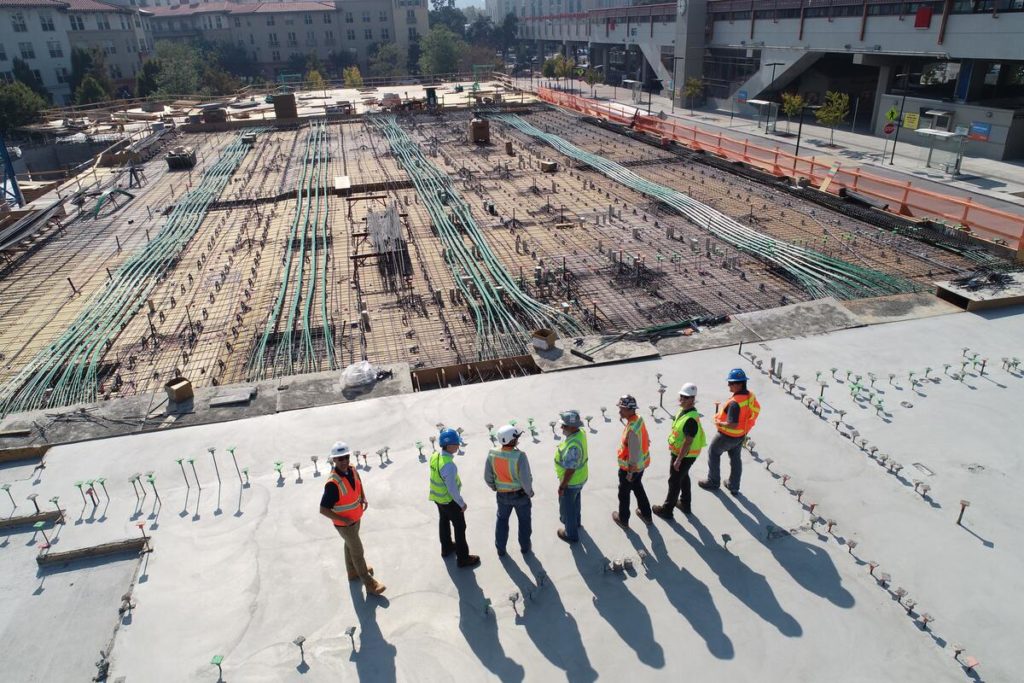Nowadays, our economy strongly depends on the hybrid relationship between the traditional and the digital industry. This is unmistakably visible in the construction industry, which is still in the middle of a productivity crisis because of high-skill labor difficulties. The demand is escalating in time and it’s expected to be brought upon acceptance, yet still open to finding talent through education and training.
While President Biden’s $1.2 Trillion Infrastructure Investment and Jobs Act is a great start—which targets to improve and rejuvenate the country’s roads, bridges, railways, and broadband, increasing internet access nationwide—the construction industry’s labor issue not only still exists and faces further challenges.
As this can be more difficult to address, the industry also sees this as an opportunity to embrace and take advantage of technology, using digital tools to make the workforce and sectors more productive and profitable, and customers happy and satisfied.
The construction industry never stays behind
Historically, the industry has been lagged by the rest, yet constantly climbed up and topped over other industries when it comes to digitization. McKinsey & Company had come up with the best practices in order to take advantage of digital construction, combating these days’ challenges. They’ve shown how quickly digital tools can enhance collaboration among stakeholders, builders, and owners. With further problems in the future, digital tools in construction will be more helpful and allow people to understand its benefits better.
While manufacturing produces the same products every time and their operations have become predictable, construction projects have something to show for, having unique moving parts, brought upon by such things as land, materials, traffic, drainage, soil composition, environmental, and regional regulations. They have been regulated to avoid risks as much as possible instead of embracing risks, resulting in unanticipated changes.
Technology helps in eliminating unpredictability
Today’s technologies are designed to assist companies in reducing the effects of unforeseen changes, and this is not only true to the construction industry, but to other industries as well. Digital technologies make the most impactful difference in construction.
These technologies are designed to capture, analyze, and distribute as much information as possible, quicker, and more accurately, from different job sites. They aim to help owners and builders to know what to expect and allow them to respond to unpredictable problems faster, and/or even avoid them before they happen.
This then is assured to lead to increased opportunities to build better and smarter, reduced delays and unnecessary repetition, and boosted the productivity of the workforce. They can now bring more projects in time and depend on budget, even while in the middle of operation with constrained resources and staff talents.
Artificial Intelligence (AI) for project planning
Difficulty in talent labor means that more work is given to individual workers that are already in progress. Certainly, they will experience overwork which can lead up to injury and turnover rates, diminishing the available workforce and creating shortages once again. With labor shortages already occurring in the industry, contractors cannot afford to lose more people and allow any setback to get in their way.
With new AI technology, project planning and scheduling optimization can be preplanned and managed through algorithms, thus cutting down the workload and avoiding overwork. These technologies generate alternative schedule possibilities to inform contractors of the most advantageous way to go. They allow construction teams to maximize efficiency without overworking and getting off schedule. This will also attract potential hires.

Telematics for monitoring equipment
During this labor shortage crisis, contractors also need to monitor their equipment constantly to prevent delays and mishaps. Equipment disadvantages require more skilled labor to repair and maintain, thus slowing down workflow. Especially in heavy machinery, such as pavers, bulldozers, and the famous SDLG graders, excessive equipment downtime creates backlogs, straining the capacity to meet high demands.
Telematics application is going to help track equipment health and functionality by collecting data through cameras, cloud-based control pads, bluetooth nodes, and vehicle trackers. These tracking devices advise contractors when how long their equipment’s functionality lasts so they can prevent downtimes and perform maintenance at the right time.
Additionally, telematics can reduce the amount of back-office work, allowing the contractors to focus on their obligations and core tasks.
Remote inspections in postponing retirement and promoting training
Aging builders are a major asset in contributing to the construction labor problems. Contractors can retain an experienced workforce through remote inspection technology, which involves an on-site worker who streams video of the object being inspected to a skilled inspector off-site.
This remote task can be worked part-time by still-capable seniors since it’s safer, flexible, and more efficient. Solving the unemployment and boredom among such age groups. Having experienced inspectors guide less-experienced workers can, too, contribute to training efforts. Remote video inspections can also provide a significant connection between the present and the future workforce.
Technology may not entirely solve the skilled labor adversities, but it’s a crucial part of the industry to make construction workforces more efficient, more productive, and safer. Digital tools will better gear up contractors and address increased public work projects and demands.
Having new technology applications hopes to attract younger interested workers and go into proper training and delve into the tech-centered industry of contraction. Digitization in construction can help vital sectors meet the needs and standards and create brighter futures, rather than simply catching up to the world.

